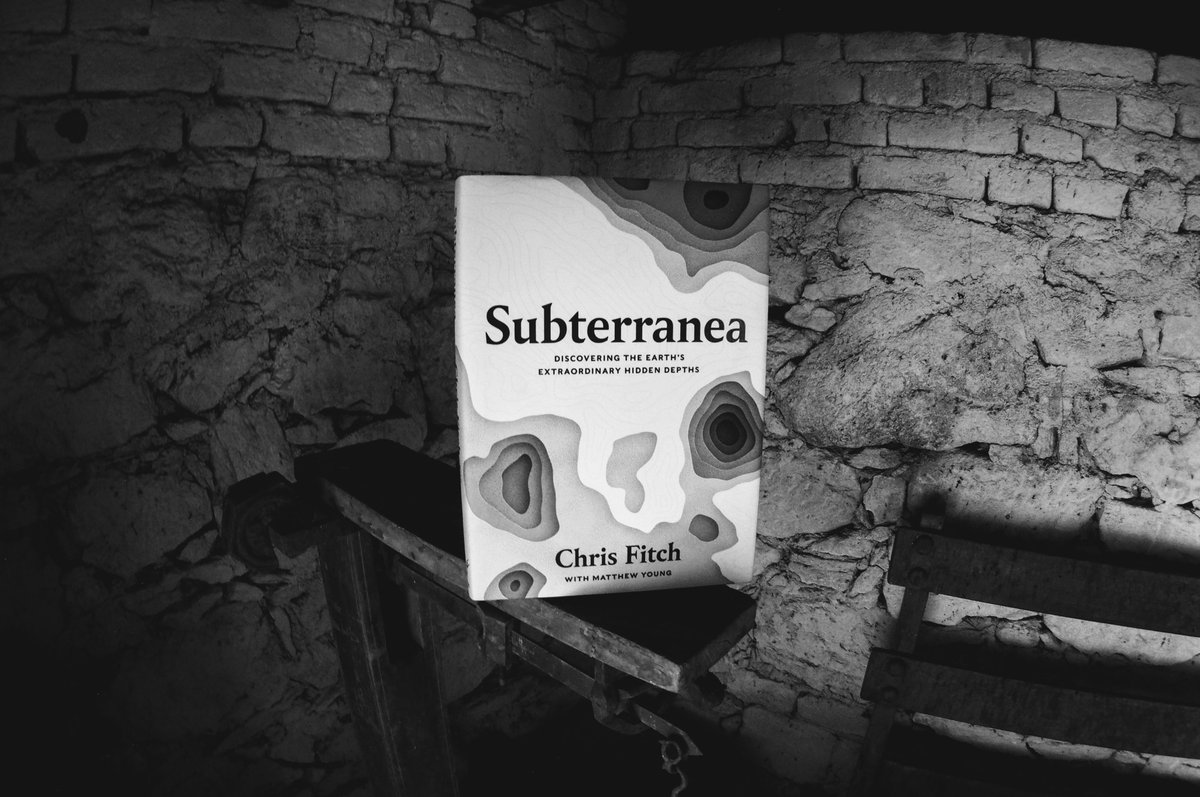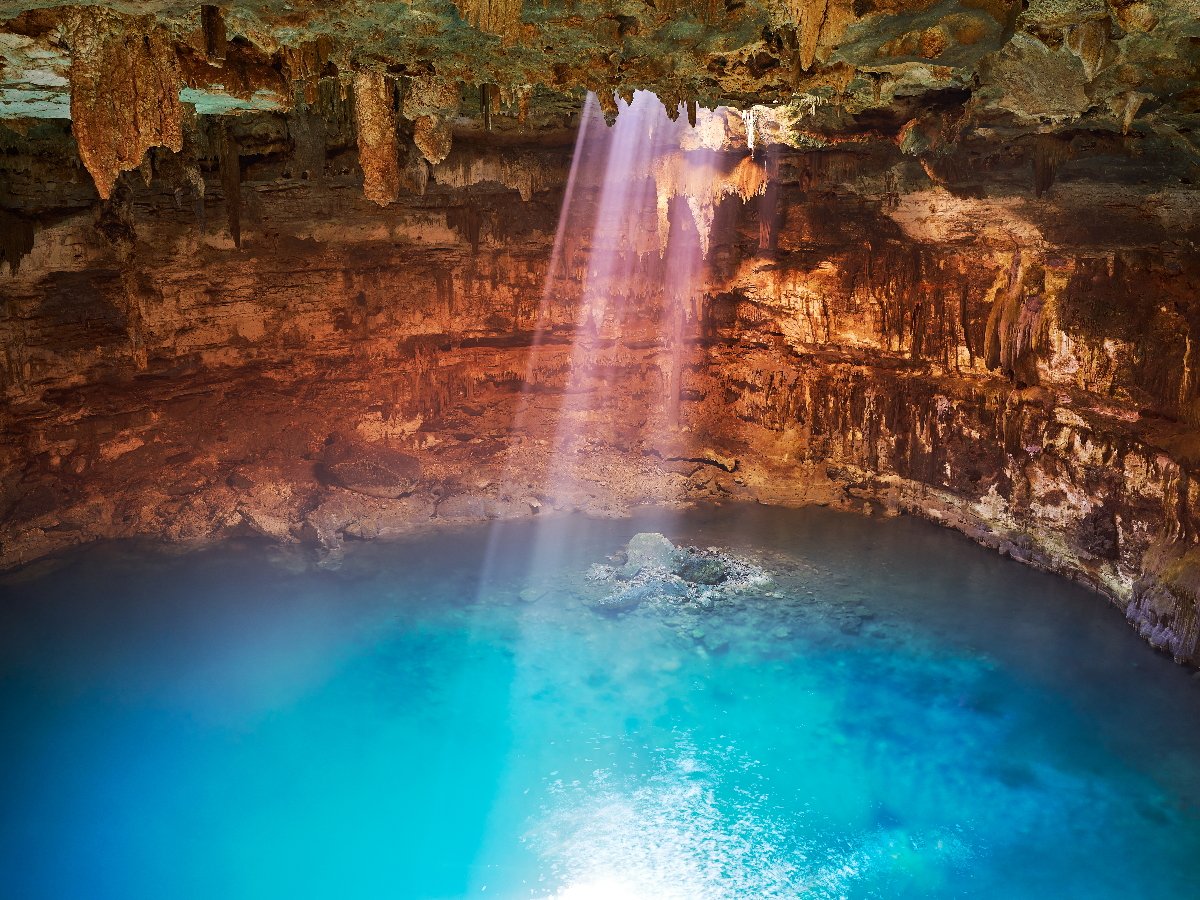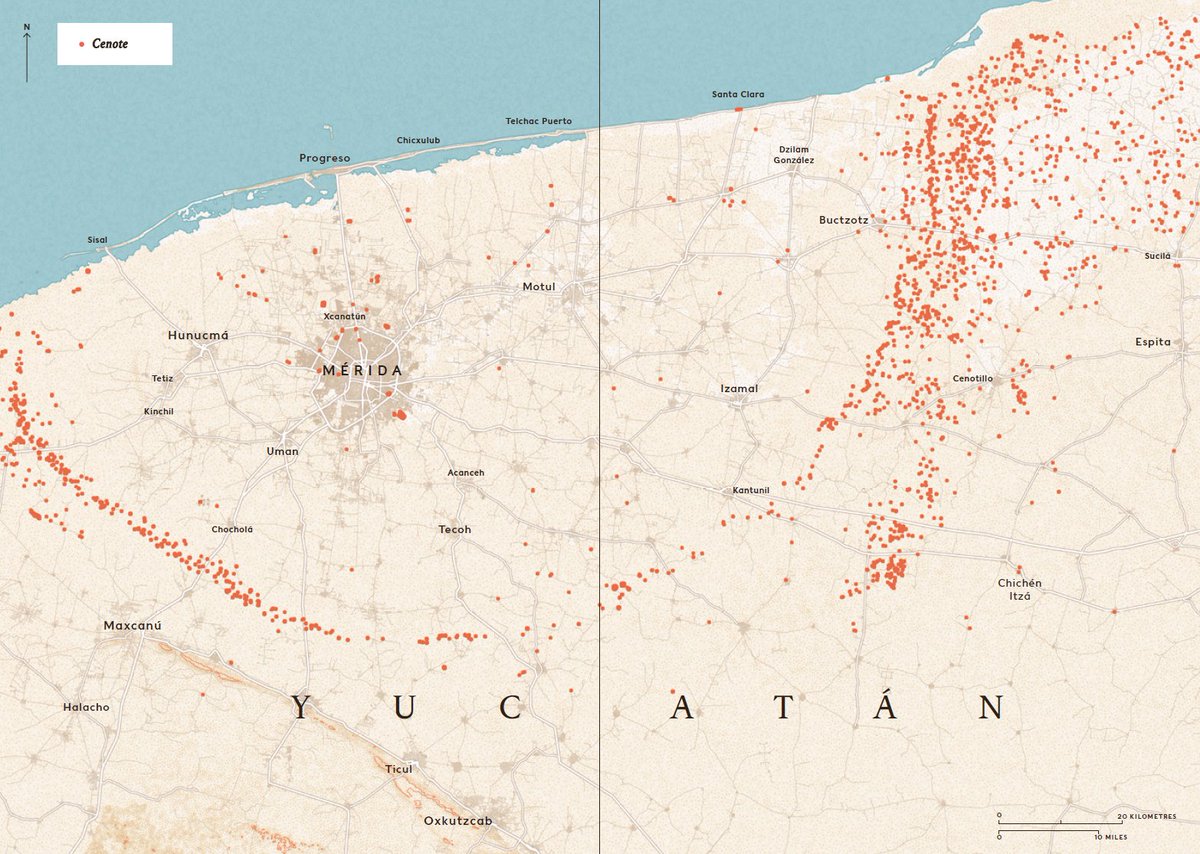It& #39;s Subterranea publication week  https://abs.twimg.com/emoji/v2/... draggable="false" alt="🙌" title="Raising hands" aria-label="Emoji: Raising hands"> https://www.hive.co.uk/Product/Chris-Fitch/Subterranea--Discovering-the-Earths-Extraordinary-Hidden-Depths/24950979
https://abs.twimg.com/emoji/v2/... draggable="false" alt="🙌" title="Raising hands" aria-label="Emoji: Raising hands"> https://www.hive.co.uk/Product/Chris-Fitch/Subterranea--Discovering-the-Earths-Extraordinary-Hidden-Depths/24950979
So">https://www.hive.co.uk/Product/C... I& #39;m going to share a few awesome stories I discovered about the underground world...
So">https://www.hive.co.uk/Product/C... I& #39;m going to share a few awesome stories I discovered about the underground world...
First, for today, Monday, I give you a subterranean story that involves Mexican swimming pools  https://abs.twimg.com/emoji/v2/... draggable="false" alt="🇲🇽" title="Flagge von Mexiko" aria-label="Emoji: Flagge von Mexiko">, human sacrifice
https://abs.twimg.com/emoji/v2/... draggable="false" alt="🇲🇽" title="Flagge von Mexiko" aria-label="Emoji: Flagge von Mexiko">, human sacrifice  https://abs.twimg.com/emoji/v2/... draggable="false" alt="💀" title="Schädel" aria-label="Emoji: Schädel">, and the end of the dinosaurs
https://abs.twimg.com/emoji/v2/... draggable="false" alt="💀" title="Schädel" aria-label="Emoji: Schädel">, and the end of the dinosaurs  https://abs.twimg.com/emoji/v2/... draggable="false" alt="🦖" title="T-Rex" aria-label="Emoji: T-Rex">
https://abs.twimg.com/emoji/v2/... draggable="false" alt="🦖" title="T-Rex" aria-label="Emoji: T-Rex">
If you& #39;ve ever been to Mexico& #39;s Yucatán peninsula, you& #39;ll know that some of the most popular tourist attractions are the massive holes in the ground known as & #39;cenotes& #39;
You know cenotes. They& #39;re beautiful. They look stunning like this
(credit shutterstock/lunamarina)
(credit shutterstock/lunamarina)
For tourists visiting the Yucatán, a dip in a cenote or two is a super popular activity. But there is *so much* more to these holes than just glorified swimming pools
For example, one cenote is located near Chichén Itzá. You know, this place, the most famous ancient Mayan city
The Maya needed the cenotes. They were a vital source of fresh drinking water. Without cenotes, it& #39;s very unlikely Mayan civilisation would have lasted anywhere near the 3000ish years that it did, or grown to cover as much territory
(the & #39;chichén& #39; in & #39;Chichén Itzá& #39; literally spells this out, & #39;chi& #39; translating to & #39;mouth& #39;, and & #39;chén& #39; to & #39;well& #39;)
Cenotes have a darker history. They were believed to be the home of the Mayan god of rain Chac/Chaac/Chaahk (different spellings in different places). To encourage the rains, gifts including gold and incense - sometimes even children  https://abs.twimg.com/emoji/v2/... draggable="false" alt="☹️" title="Stirnrunzelndes Gesicht" aria-label="Emoji: Stirnrunzelndes Gesicht"> - would be thrown down to please Chac
https://abs.twimg.com/emoji/v2/... draggable="false" alt="☹️" title="Stirnrunzelndes Gesicht" aria-label="Emoji: Stirnrunzelndes Gesicht"> - would be thrown down to please Chac
The cenotes were understood to be sacred passageways to the netherworld. Which, since the Yucatán has recently been confirmed to have the world& #39;s largest known underwater cave system (347 kilometres!), might not be so far from the truth...
What is really fascinating is if you view the cenotes from above. The 900ish holes form a clear semi-circle, a massive arch stretching over 100 miles across the peninsula
What we& #39;re looking at are the remains of the Chicxulub crater, the impact zone of an asteroid that smashed into the Yucatán peninsula 66 million years ago. It caused a super-tsunami that swept around the globe, wiping out the dinosaurs
Cenotes are a beautiful and distinctive feature of Mexico& #39;s Yucatán peninsula. Formed by an asteroid, they sustained Mayan civilisation for millennia, and are an ongoing source of subterranean fascination to this day
For more info about cenotes, or many other stories from the underground world, get yourself one of the last pre-orders of Subterranea: Discovering the Earth& #39;s Extraordinary Hidden Depths, published this Thursday https://www.amazon.co.uk/Subterranea-Discovering-Earths-Extraordinary-Hidden/dp/1472272323/">https://www.amazon.co.uk/Subterran...

 Read on Twitter
Read on Twitter https://www.hive.co.uk/Product/C... I& #39;m going to share a few awesome stories I discovered about the underground world..." title="It& #39;s Subterranea publication week https://abs.twimg.com/emoji/v2/... draggable="false" alt="🙌" title="Raising hands" aria-label="Emoji: Raising hands"> https://www.hive.co.uk/Product/C... I& #39;m going to share a few awesome stories I discovered about the underground world..." class="img-responsive" style="max-width:100%;"/>
https://www.hive.co.uk/Product/C... I& #39;m going to share a few awesome stories I discovered about the underground world..." title="It& #39;s Subterranea publication week https://abs.twimg.com/emoji/v2/... draggable="false" alt="🙌" title="Raising hands" aria-label="Emoji: Raising hands"> https://www.hive.co.uk/Product/C... I& #39;m going to share a few awesome stories I discovered about the underground world..." class="img-responsive" style="max-width:100%;"/>






